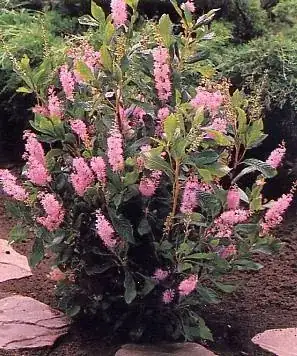At the suggestion of @Jurp I purchased three clethras. The motivation is attracting wildlife, and having nice summer fragrance. Now however I don't know what to do with them, I'll explain the reason in a moment.
The nursery says they are 1m high max. They swear it is true. However, they delivered all three plants exciding their max height! :-o All are around 1.2m high. When I brought this to their attention, they just stared blankly at me.
If I search the internet, max height varies between 1m and 2.5m. I am afraid I will plant them in wrong place. Can you help?
Adult unpruned clethra 'Pink spires' should look like this:
